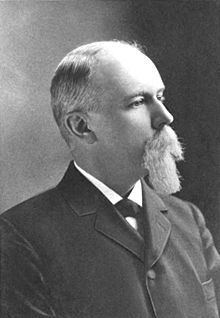Occupation Railroad executive Died December 17, 1906 Name John Hood | Spouse(s) Florence Eloise Haden Years active 1874-1906 | |
 | ||
John Mifflin Hood (1843–1906) was an American railroad executive. Hood was President of the Western Maryland Railway (WM) from 1874 to 1901. In 1901 he became President of United Railways and Electric Company, a streetcar company in Baltimore, 1899-1935 (succeeded by Baltimore Transit Company to 1968).
Contents
Life and early career
Hood was born in Howard County, Maryland, near Sykesville, on April 5, 1843. He studied civil engineering and worked as an engineer on construction projects for several railroads in the mid-Atlantic region, including the Philadelphia and Baltimore Central Railroad, where he was appointed Superintendent and Chief Engineer.
Western Maryland Railway
Hood joined the Western Maryland Railway as Vice President and General Manager in 1874, and later that year he became President of the company. During his career at the WM he led the company in its transformation from a local to a major regional railroad, The WM built 270 miles (430 km) of new rail lines and the extent of its territory expanded from its initial Baltimore-to-Hagerstown, Maryland route to include new lines in Pennsylvania and an important new connection with the Baltimore and Ohio Railroad. He oversaw a major improvement in the railway's financial condition. During his tenure the company's annual gross earnings increased from about $218,000 in 1874 to $2.1 million in 1902.
United Railways and Electric Company
Hood joined United Railways, the merged new streetcar system in Baltimore, in 1901. At that time the company's infrastructure was significantly deteriorated, and Hood oversaw extensive renovations as well as expansions of the system. He managed a rebuilding of the system and its newly constructed Pratt Street Power Plant located on "The Basin" (now called the Inner Harbor) after the Great Baltimore Fire of 1904. The fire had destroyed over 1,500 buildings and devastated most of central downtown Baltimore in the third worst conflagration to hit an American city (the others were Chicago in 1871 and San Francisco in 1906).
A statue of Hood was erected several years later by his friends in the City in the old Hopkins Place between West Baltimore and German (later Redwood) Streets (modern site of 1962 Baltimore Civic Center, later renamed 1st Mariner Arena) on the western side of downtown, adjacent to the 1958-1970 redevelopment Charles Center project and later relocated after 1963 to the terraced "Preston Gardens" along the 300 block of St. Paul Street and Place north of East Saratoga Street, across from the expanded campus of the Mercy Medical Center (old Mercy Hospital)
